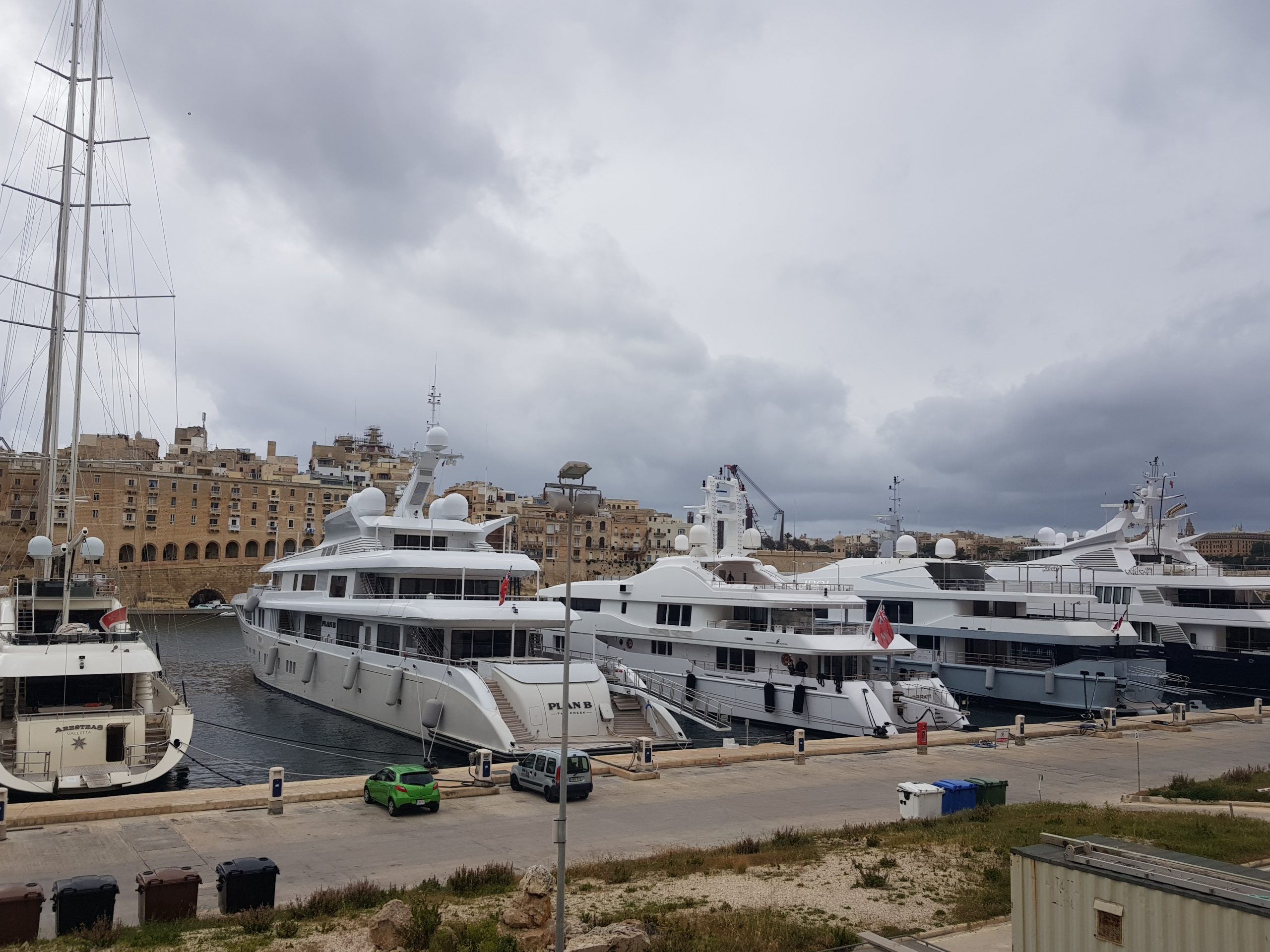Malta – South Eastern Region – Birgu – The Inquisitor’s Palace
Located in Vittoriosa, this is one of the best examples of a former Inquisitor’s Palace building still in existence. It was unfortunately mauled about a bit internally by the British when we had taken control of Malta from the early part of the nineteenth century, but there is plenty of history remaining.
The Knights of St. John built this palace to be used as the civil law courts in the 1530s, shortly after they had moved from Rhodes. They built it on top of an earlier building, of which some of the above foundations are still visible. When the new capital of Valletta was constructed the courts moved there, so the inquisitor, or someone who checks up on how the Catholic faith is being obeyed, moved in four years later.
Part of a former ceiling, looked down on from above.
The grand staircase added in 1733 by Inquisitor Francesco Stoppani.
An external well which was constructed in the mid-seventeenth century to be used as the depository of the communal cell’s toilet.
A rather graphic depiction of Jesus, the top one is made from wood and dates to the seventeenth century, whilst the bottom one is made from papier-mache and dates to the nineteenth century.
This is a twentieth century replica piece of clothing which I don’t entirely understand. Similar items were worn by individuals as an act of penance, so I’m guessing it’s for that purpose…
The torture chamber, which the museum makes clear was rarely used and it was only ever in operation to try and extract confessions rather than as a punishment. The inquisitors in Malta weren’t seen as brutal as those in other countries and the aim was to encourage people to follow good traditional Catholic values rather than to punish them excessively.
The Grand Inquisitor’s Chamber, where decisions would have been made and sentences announced.
The inquisitors believed in secrecy and these are the steps which went up to the Grand Inquisitor’s Chamber. The window on the left of the steps looks into the torture chamber and would be closed to prevent anyone from seeing who was walking up the stairs.
The entrance to one of the many cells, which is irritatingly low down.
Graffiti in the cells scratched into the limestone by inmates over the centuries.
Hygiene in the cells was considered important and there was drainage and the facilities to deposit waste in every cell.
This is an extensive palace and there was plenty of see, including the former kitchens, the chapel (which the British turned into a corridor), the bedroom of the Inquisitor, the bedroom of the head warder and numerous other prison cells. It all really became a little bit of a maze, with the directions not always entirely clear. There was also a permanent display about Christmas and I didn’t quite understand the relevance of that to the whole museum.
The inquisitors were not the harsh men which they have more recently been made out to be, they were simply the enforcers of the church which was immensely powerful at the time. The inquisitors also used the role as career enhancing in many cases, there were 62 inquisitors in total of whom 27 became cardinals and two became Pope. The two men who were elevated to the position of Pope were Fabio Chigi from 1655 until 1667 and Antonio Pignatelli from 1691 until 1700, with the former being guilty of some appalling nepotism, whilst the latter put an end to the practice.
I’m sure though that more could be done with the museum, as some of the items marked as being original clearly weren’t and there was frequently no explanation as to what a particular room was for. They have far more rooms than they have exhibitions and some exhibits were rather padded out and not particularly informative.
However, it was a fascinating building which an immense history, one which has fortunately managed to avoid being damaged in wars or changed too much internally. It’s just a shame that they didn’t really explain the architecture of more of the rooms, I was more engaged with the history of the building than looking at displays about Christmas.
















